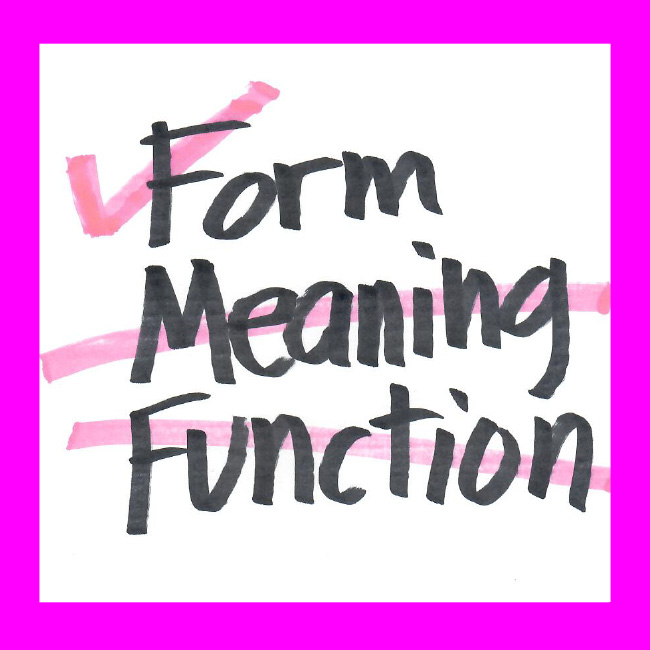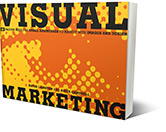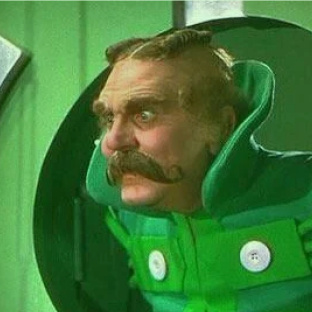AI and enhanced design templates may do "Form," but can they do "Meaning" and "Function"?
This article is adapted from a more extended version published on UXCollective. Click here to see the full version.
The real threat to graphic designers is not AI—it’s untrained people with access to better tools who can create professional-looking communications but lack the training, design education, and understanding of how to use powerful visuals to build effective communications. Graphic designers and creatives are feeling the impact. The New York Times reports, “Just when they should be at their peak, experienced workers in creative fields find that their skills are all but obsolete.”
I saw this note from a nonprofit professional with no graphic design training commenting about DIY graphic design on a forum recently, and it perfectly encapsulates the challenges for graphic designers today:
Admittedly, my marketing background may have made it easier for me to create the report (still: THANK YOU CANVA!), but I truly liked having control of the project. If I could in the future, I would hire an outside designer for the report.
As they say in horror movies, “The screams are coming from within the house!” And yet as this media revolution continues there is a critical role for graphic designers and communication strategists. New York Times columnist, Tressie McMillan Cotton, declares, “AI is Pretty Mid.” She writes, “You can’t just learn how to craft a prompt for an AI chatbot without first having the experience, exposure and, yes, education to know what the heck you are doing.”
Trained graphic designers provide important skills and expertise that you cannot get from AI.
There are three aspects of design: Form, Meaning, and Function. AI Templates are really good at the first one, Form. They can make things look really good. But they lack the ability to handle Meaning and Function. And the future of design — and effective communications — lies in these two. Here are two examples where designers can distinguish themselves:
1. Graphic designers examine the meaning of design. Semiotics is the study of the meaning of signs and symbols. I have to admit that when I studied Semiotics at RISD, I had no idea what the professor was talking about. I loved imagery, typography, and layout yet, I was grappling with what it all meant. Years later, while I was working in a graphic design studio, the “light” went on. As I worked in the field and used the tools of the trade for publishing — and eventually digital publishing — I began to understand why the “Form, Meaning, and Function” of design was so important. “Form” is what a design or layout “looks like.” It’s also the craft, quality, and consistency of the design. It’s what most people think of when they think about design. The aesthetics are important, yet they can be arbitrary. They can be just a matter of choice and preference. If I have good taste, am I a good designer? Even though Apple is known for its sleek-looking designs, Steve Jobs knew it was much more than the looks that mattered. Jobs said, "Design is not just what it looks like and feels like. Design is how it works.
“Meaning” is about how the choices in “Form” impact the viewer. What does this design or layout say about the product, service, or organization?
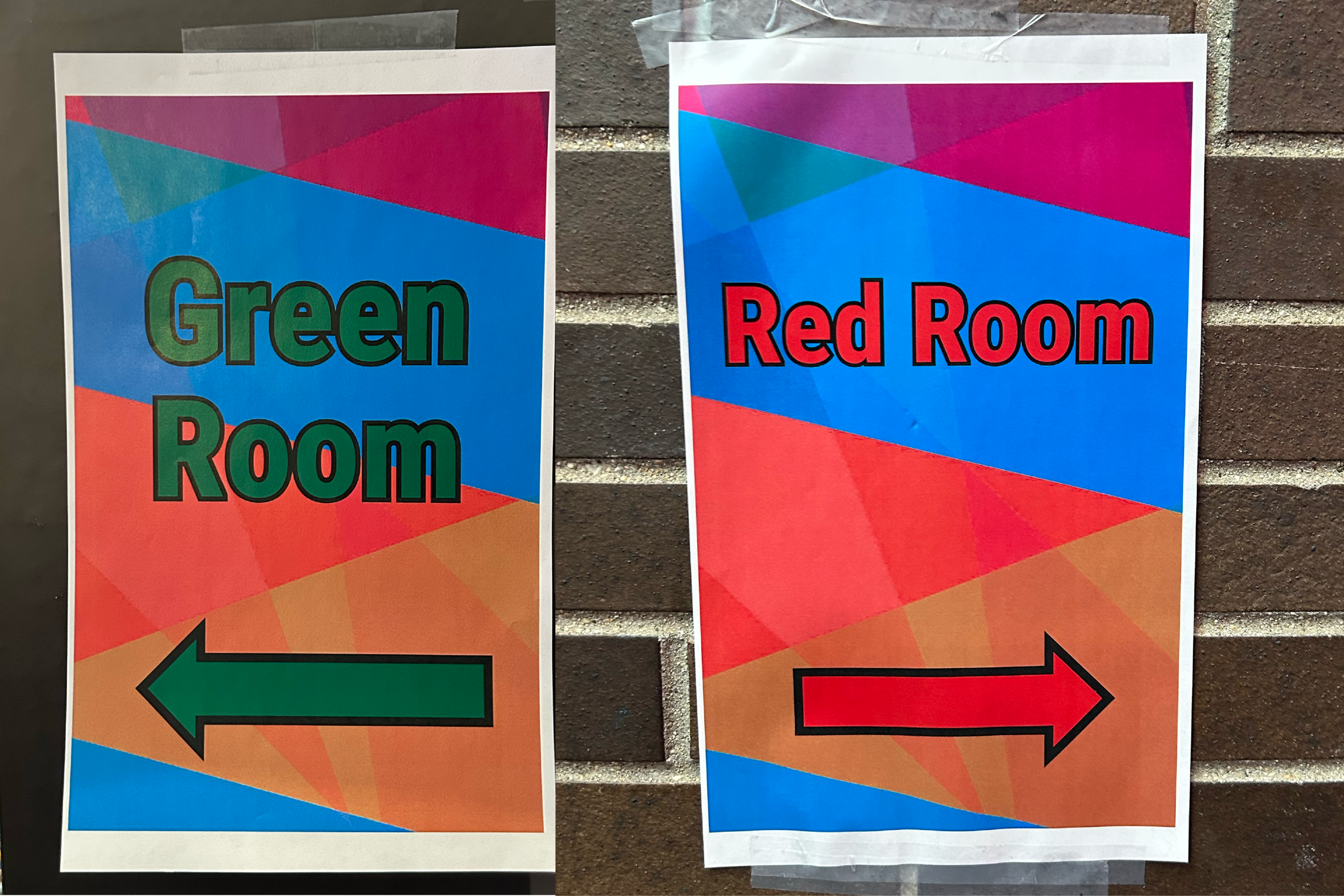
Missed opportunity: These signs appeared at a conference to show attendees where to go for the next break-out session. A trained graphic designer would use the colors Green and Red to dominate the signs so that, at a glance, the attendees would know where to go. Instead, we have decorative and confusing backgrounds and inconsistent type sizes. These should be “at-a-glance” directional signs that serve an essential purpose when you are running from one meeting location to another in a space that you are not familiar with. The message being conveyed is, “We’re having fun with color.” (Form). “We didn’t think about how the colors could help the viewer navigate.” (Meaning) And “We really don’t care about how the signs work.” (Function).
A layout can express anger, look sloppy, express joy, look professional. Color, typefaces, and images all have meanings and when combined with words can support or undermine the key messages. “Function” is all about how this works. Are you measuring results? Did the communication you sent out achieve the goals? Does it effectively reflect the product, service or organization? An educated and experienced designer is sensitive to these issues and can guide you on building the right brand and communication programs.
2. Graphic designers apply design principles with strategy. The semiotics are the building blocks for effective design. A good designer can help you use AI and the latest technology to achieve your goals. By itself, AI can mimic design (Form) but has trouble evaluating the messaging (Meaning) or delivering a strategy that works (Function.). Marketing strategist Maria Lilly and I were asked to help launch the website for Community Foundations of the Hudson Valley. They had already invested in a new design — and it looked good, it was a major upgrade from their old website. The “Form” was there, but the photos had no context, the viewer couldn’t tell at a glance what the organization was about, and the content needed to be clarified, edited, and made more succinct. The website needed a clear “call to action.” We kept the overall design but added some key features to quickly communicate what this organization does and share its value proposition.
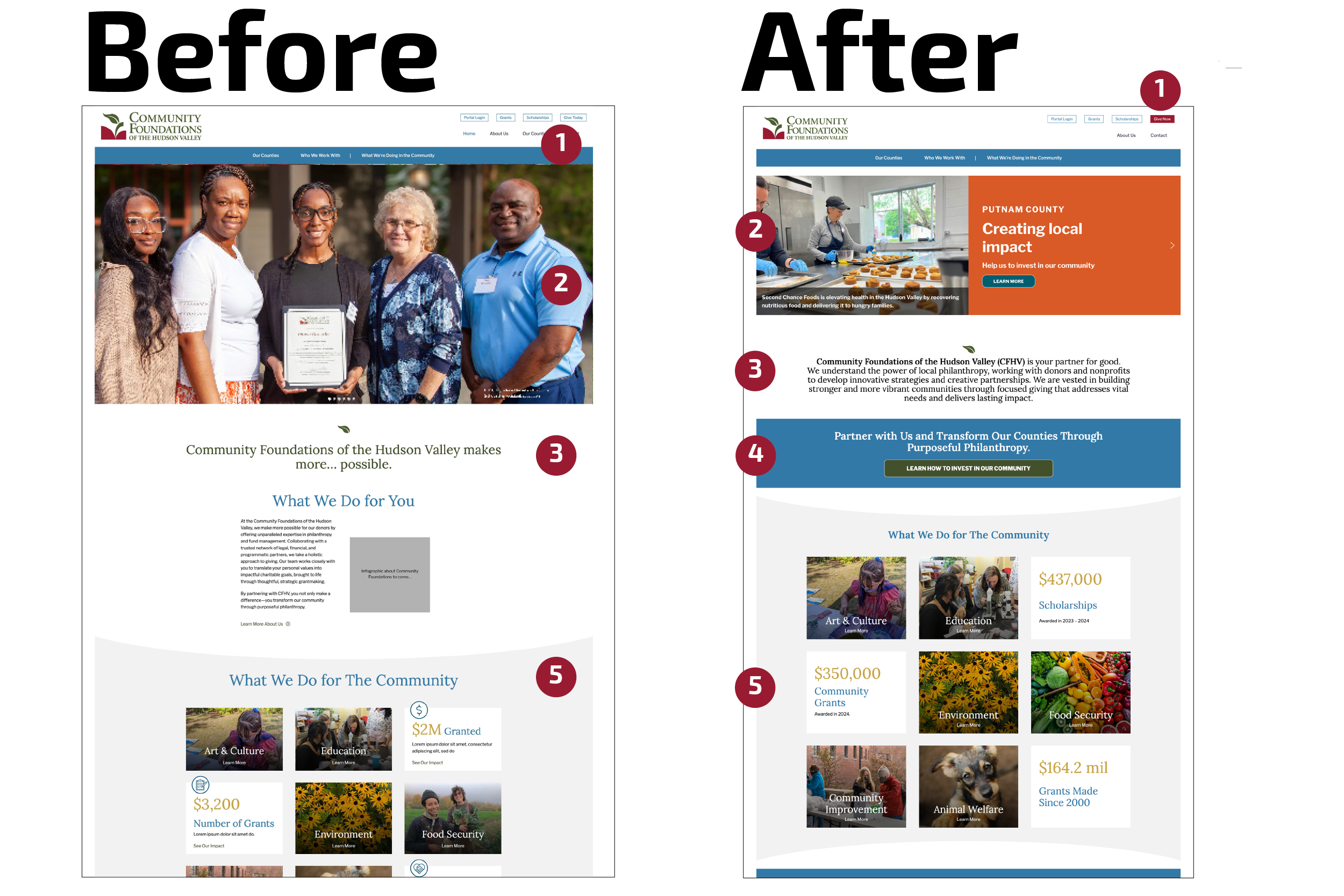
How a designer can improve upon a website template.
- We made the “Give Now” button more prominent.
- There was a slide carousel with six nice but arbitrary photos. We selected three key images that aligned with the three counties served, added headlines with key mission-driven language, a link to the County page with more details, and descriptive captions so the viewer knew why the image was chosen.
- We added a more detailed vision statement that succinctly tells the story of the organization for new viewers.
- We added a new banner with a “call to action” to learn more about investing.
- Since the “What We Do in the Community” section was very important, we moved it higher on the page so it began “above the fold.”
The website templates looked fine (Form), but the strategic thinking (Meaning) needed strengthening, and ultimately, the effectiveness of the site improved. (Function.)
In the 1980s, when the Apple Mac was introduced, designers found out that their biggest competition wasn’t other designers but secretaries who could type and use their word processing skills to produce publications. Everyone could be a graphic designer. A lot of the work looked pretty good, but overall, there was a drop in quality. Typography was in a tailspin. Layouts were bland and repetitive. Graphic designers learned how to be typesetters, use sophisticated software, and employ digital tools to create better layouts, websites, and more. Fast-forward to today, where templates have gotten a whole lot better! Now it’s harder to tell the difference between a professionally designed document and an AI-powered, self-produced one. But eventually, this all leads to blandness. Looking good is not enough. The right look and the right message need to be crafted with the client’s mission in mind. They say a picture is worth a thousand words, but a thousand of the wrong words don’t do anyone any good. Joshua Rothman writes in the New Yorker, “At this point, it’s up to us—those of us outside of AI—to insert ourselves into the conversation. What do we value in people and in society? Where do we want AI to help us, and when do we want it to keep out?” Graphic designers can embrace the technology and combine the tools with the right strategy to deliver the results that effective communications truly require.
Back to Insights
